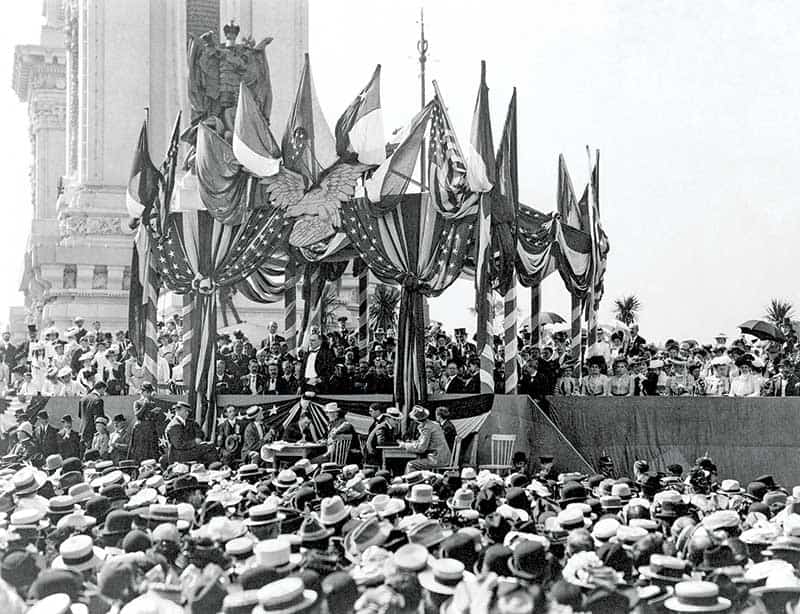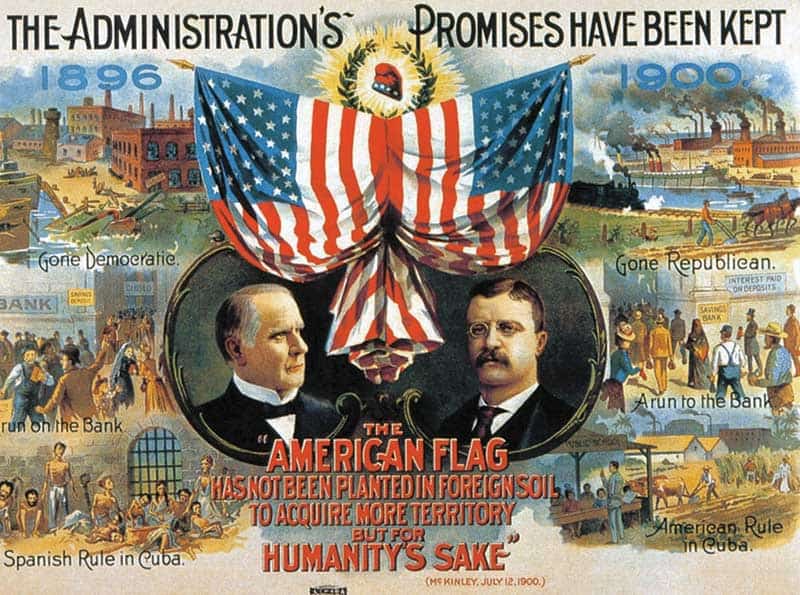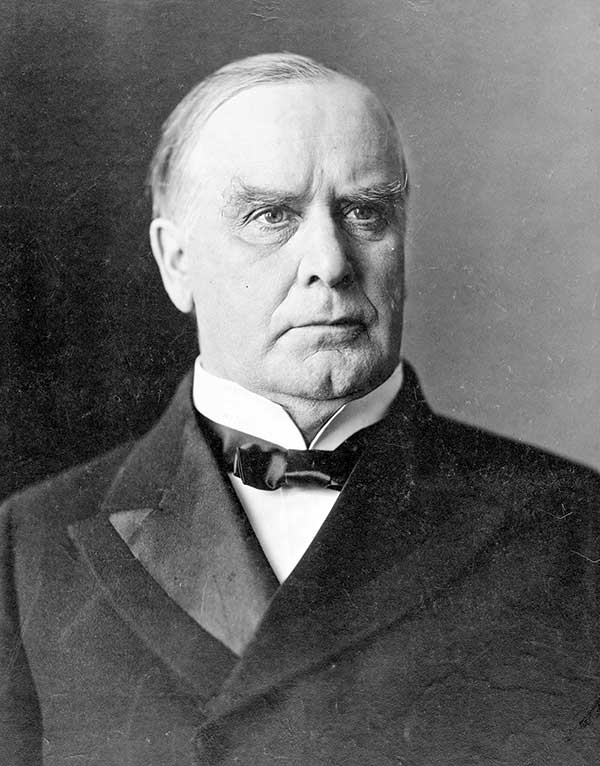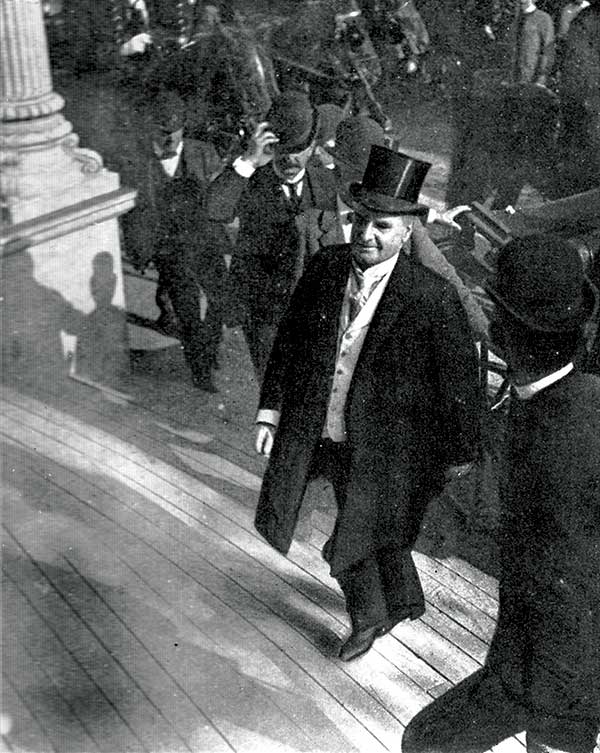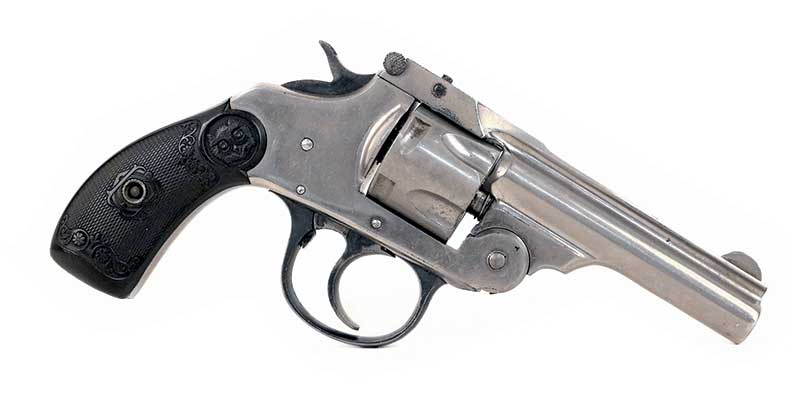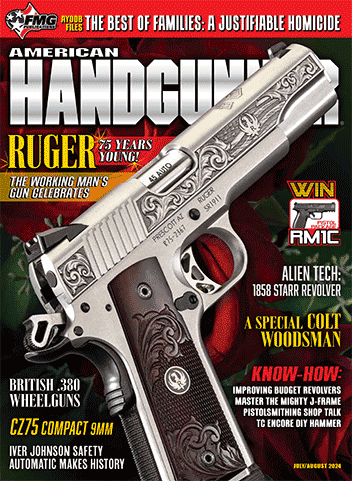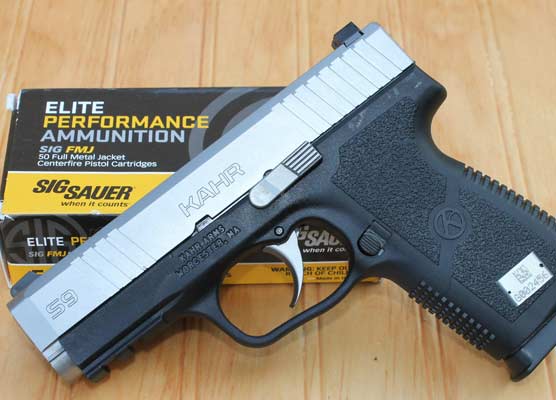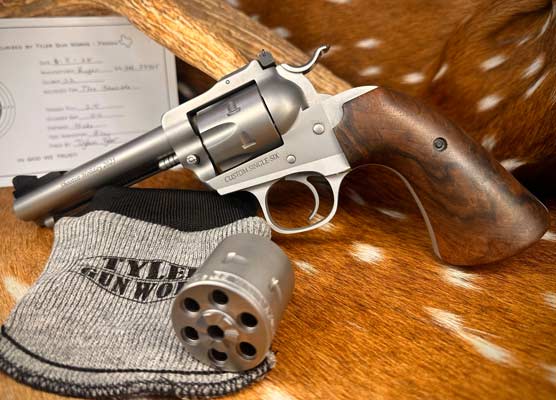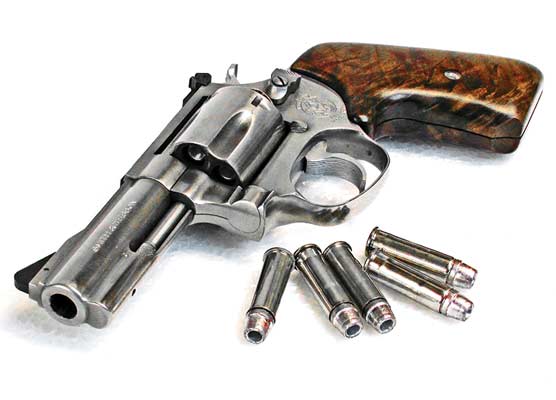The Anarchist Assassin
Who Killed a President
An Iver Johnson Safety Automatic Put to Bad Use
Stopping power. That term sounds ominous enough. However, as it relates to handguns, stopping power is a little bit like fiscally responsible Congressmen, supermodels who aren’t crazy, and the Easter Bunny. We may talk about them a lot, but none of that is actually real.
I have seen folks shot with 9mm handguns who were minimally inconvenienced. And then one woman caught a strategically placed .25 ACP round and never took another step. No big handgun is a completely reliable manstopper, and no small handgun is even remotely safe. In the sordid tale of the anarchist Leon Czolgosz and President William McKinley, we see this universal axiom on gory display.
Crazy Unhinged Politics
Anarchists are a timeless scourge. Distilled to its essence, anarchism is a nonsensical philosophy occupying the farthest left position on the political spectrum. Anarchism advocates for the abolition of any formal authority, including government, capitalism, and nation-states, to be replaced by stateless free associations. The most common contemporary analog would be Antifa.
The true anarchist posits people are inherently good — that if left to their own devices, homo sapiens will just naturally do the right thing. As near as I can tell, such folks have never actually met a real human being. My personal experience as a soldier, physician and actual person informs me otherwise. In sum, anarchists are delusional idiots.
Back in the late 19th century, Leon Czolgosz was fairly typical of the genre. Leon was a Polish-American immigrant and full-time professional loser. He toiled briefly in a glass factory but was laid off in 1893. His sordid financial straits, combined with some baseline gullibility issues and disillusionment with the Catholic Church, led him to anarchism.
It would be fine if anarchists held private meetings and kept their delusional psychopathy to themselves. However, anarchists are quick to want to impose their unhinged worldview on the rest of us. In Europe, in Czolgosz’s day, that meant widespread political assassination and terrorism.
Czolgosz was an unabashed acolyte of radical writer Emma Goldman. He thought they should hang out. Eventually, Emma got a stalker vibe and stopped returning his calls. Czolgosz was already awkward, probably because his name had a deplorable excess of consonants. Being rebuffed by his favorite literary lunatic kind of pushed him over the edge.
Now unemployed, spurned, and more than a little bit crazy, Czolgosz began to project his many manifest shortcomings onto the person of President William McKinley. Like most of his ilk, Czolgosz was unable to assume responsibility for his own personal failings, opting rather to believe he would actually have been awesome had it not been for that awful President McKinley. Czolgosz subsequently sought out Walbridge’s Hardware Store in Buffalo, NY, and bought a cheap .32-caliber Iver Johnson Safety Automatic revolver. It was likely all he could afford. Having secured his weapon, Leon Czolgosz resolved to assassinate the President.
The Target
President William McKinley was, by all accounts, a pretty great guy. He was the last Civil War veteran to hold the office. McKinley enlisted as a Private and ended the war as a Brevet Major, serving at the Second Battle of Bull Run as well as Antietam. He was unhorsed at Berryville during the Shenandoah Valley campaign yet came through unscathed.
McKinley’s personal life was, lamentably, fairly typical of the era. He lost his two daughters to childhood illnesses, and his wife never really recovered. McKinley threw himself into politics as a catharsis and was considered innovative, principled and popular.
Vice President Garrett Hobart died unexpectedly in 1899, and McKinley never bothered to find a replacement. For his second term, McKinley co-opted a young war hero from New York named Theodore Roosevelt for the role. The sordid events to come eventually helped propel Roosevelt to greatness.
McKinley successfully helmed the country through the Spanish-American War and led us out of the economic crisis of 1893. He was popular both at home and among our allies abroad. In 1901, McKinley was scheduled to attend a public reception at the Temple of Music during the Pan-American Exposition in Buffalo, NY. The theme of the exposition was electricity and its many revolutionary applications. Leon Czolgosz saw his opportunity.
The Shooting
Like most public figures, President McKinley enjoyed pressing the flesh. His was supposedly a legendary handshake. He could consistently shake 50 hands per minute. Somebody actually calculated that.
McKinley’s personal secretary, George Cortelyou, had a weird feeling about the upcoming venue and attempted to cancel his public reception twice over security concerns. In both cases, McKinley overruled him. This was to be an epically bad decision.
On 5 September 1901, President McKinley was slated to deliver a speech and then tour the fair exhibits. There were 116,000 people in attendance that day. A bit less than half attended his speech. On the first day of the event, Czolgosz attempted to get close enough for a shot but was thwarted by the President’s security detail. On Day 2 at the Temple of Music reception, he got his chance.
Czolgosz got in line well in advance. Security for the President was a big deal, even then. Anarchists in Europe had successfully murdered King Umberto I of Italy the year before. Everyone was on edge.
To greet the President, you had to have both hands in clear view and empty. However, on this day, it was sweltering. Everybody seemed to have a handkerchief to mop their brow prior to meeting the nation’s chief executive. The security detail subsequently relaxed the rules a bit.
When his turn finally came, Czolgosz held out both hands, his right draped in a white handkerchief. McKinley assumed the handkerchief to be a dressing for a wound of some sort and reached for his left hand. Before anyone could intervene, Czolgosz fired off two quick shots from his diminutive little double-action .32-caliber revolver.
One round deflected off of one of McKinley’s buttons. The President later discovered this spent bullet loose in his clothes during his ride to the hospital. The second, however, punched deep. This diminutive projectile transited McKinley’s stomach, bowel, pancreas, and adrenal gland before finally spending itself in his back muscles. The damage was done.
Security personnel and concerned spectators took Czolgosz down in an instant. The President personally intervened to stop the mob from killing the man. Czolgosz was quoted as having said, “I done my duty.”
The Weapon
Czolgosz’ Iver Johnson .32-caliber Safety Automatic was a top-break six-shot revolver. This inexpensive pocket pistol was offered in three major variants. There were also hammerless and conventional versions of each. Early models were designed to fire black powder cartridges and sported unique latching systems. The third model was designed for smokeless powder. They could all be had in either blue or electroplated nickel.
The gun was patterned after the English Webley revolver. A star-shaped ejector lifted all six empties as the barrel tipped forward. The front sight was a generous blade. The rear sight was worthless. The single-action/double-action trigger was typical of its era. For whatever reason, the black rubber grips included the image of an owl on both sides. My copy is a faithful example of the McKinley assassination gun that set me back $125 from a local pawnshop.
The .32 S&W was a pretty horrible social cartridge. A typical load pushed an 85-grain lead bullet to about 700 feet per second. However, like real estate, when it comes to close combat with a handgun, shot placement is everything.
Medical Stuff
A group of respected surgeons was assembled, and they did the best they could considering. As the theme of the exposition was electricity, President McKinley rode to the fairgrounds infirmary in an electric-powered ambulance. Oddly, one of their biggest challenges was illumination. Electric lights of the day were not particularly compelling, so the doctors were hustling to complete the operation before they lost their daylight. One of Thomas Edison’s primitive X-ray machines was available, but the medical practitioners in attendance didn’t really understand it.
The surgeons repaired the stomach wound along with whatever else they could find. However, there is an axiom in surgery that states, “Never mess with the pancreas.” McKinley’s pancreatic injury is likely what ultimately did him in.
McKinley got better immediately following the surgery, but this was not uncommon with these sorts of injuries. His physicians kept him sustained via nutrient enemas, which is undeniably icky. Throughout it all, the President remained in good spirits.
After eight days, McKinley precipitously decompensated. He knew what was coming and faced his end with grace. Legend has it he finally lost consciousness with his arm around his wife while singing his favorite hymn, “Nearer, My God, to Thee.” His cause of death was gangrene and fulminant sepsis.
The Rest Of The Story
Murdering a popular President has never been well received, and things moved quickly back in 1901. Leon Czolgosz went on trial nine days after the President’s death. The trial lasted 48 hours, and the defense called no witnesses. The jury deliberated half an hour before returning a guilty verdict. Fifty-three days after shooting the President, Leon Czolgosz met his maker in the electric chair. Prison officials soaked his body in acid prior to burial, I guess just out of spite.
This was a really crummy pistol for a proper assassination. One round was effectively thwarted by a coat button. The bullet that did actually connect took eight days to kill the man. The fact that McKinley was fat and had some pre-existing heart problems combined with a lack of antibiotic drugs sealed his fate. Nowadays, with decent medical care and some aggressive antimicrobials, he likely would have survived.
In the misguided murder of William McKinley, Leon Czolgosz showed us you can indeed kill a man with a woefully underpowered pocket pistol. However, in the absence of fairly surgical shot placement, it is tough to do so expeditiously. The message for the modern armed American is to pack as much gun as you might comfortably manage, charge it with the finest expanding ammo money can buy, and shoot like your life depends upon it. That, and don’t be an idiot anarchist.

